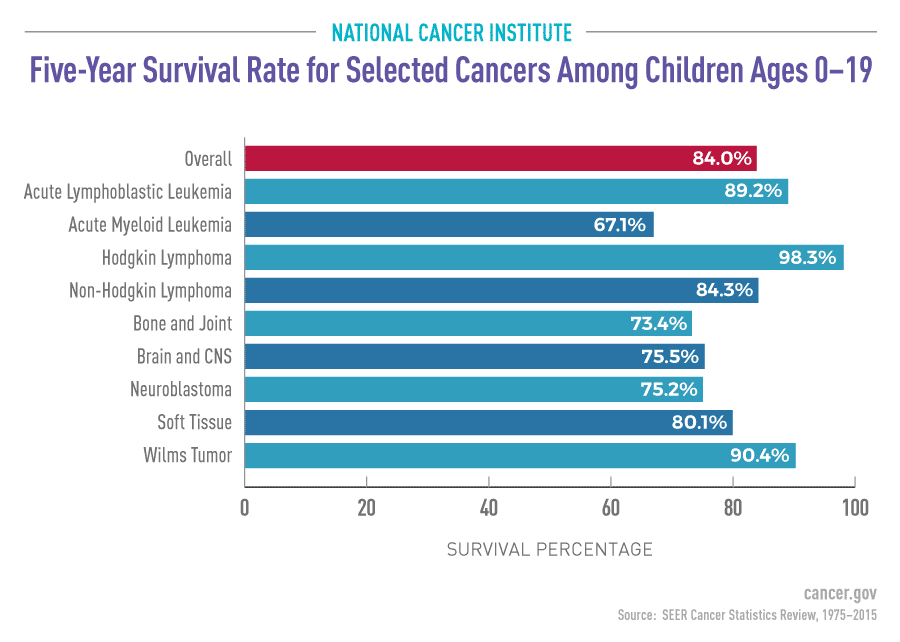Pediatric cancer recurrence is a distressing reality faced by many families, particularly those battling brain tumors like gliomas. Recent advancements in AI in pediatric oncology are revolutionizing the way we approach this challenge, offering new hope for more accurate predictions of relapse risk. A groundbreaking study from Mass General Brigham reveals that AI tools, utilizing innovative predictive modeling for cancer by analyzing multiple brain scans over time, significantly outperform traditional methods in forecasting the risk of recurrence. This is crucial, as timely and precise brain tumor imaging can enhance treatment strategies and minimize the emotional burden on both patients and their families. By understanding the principles behind recurrence risk prediction, we can pave the way for improved outcomes in the fight against pediatric cancer.
In the world of childhood cancers, the challenge of tumor relapse remains a prominent concern for clinicians and families alike. Understanding the likelihood of a return, or recurrence, of these malignancies is vital in tailoring effective treatment plans. Recent innovations, particularly those involving AI technologies, offer promising avenues for enhancing predictive accuracy and patient care. Enhanced imaging techniques and predictive models aim to assess the risk of re-emergence of cancers such as gliomas, thereby providing a clearer roadmap for managing a child’s health journey. As research continues to evolve, we stand on the brink of breakthroughs that could redefine the standards of pediatric oncology.
Revolutionizing Pediatric Cancer Care with AI
The integration of artificial intelligence (AI) in pediatric oncology has revolutionized how we understand and treat childhood cancers. One of the most promising advancements is the development of sophisticated predictive modeling for cancer recurrence. These models utilize vast amounts of data, including imaging studies and clinical histories, to identify patients at higher risk of relapse. This proactive approach enhances treatment protocols and ultimately improves survival rates for vulnerable pediatric patients.
Moreover, AI tools expedite the diagnostic process and minimize the psychological burden on families. Traditional imaging methods often require repeated MRIs over several years, leading to anxiety in both children and parents. However, with predictive modeling, clinicians can quickly assess which patients require intensive monitoring versus those who can maintain a healthier lifestyle post-treatment. By tailoring follow-up care based on individual relapse risk, healthcare providers can significantly enhance the quality of life for these children.
Predictive Modeling as a Game-Changer in Pediatric Cancer Recurrence
Predictive modeling is becoming increasingly vital in pediatric cancer management, especially when it comes to anticipating relapse. The recent study from Harvard illustrates the effectiveness of using AI-based tools compared to traditional methods. By analyzing temporal images—multiple MR scans over time—the algorithm has demonstrated accuracy rates between 75-89% when predicting pediatric cancer recurrence, particularly in cases of gliomas.
The significance of this accuracy cannot be overstated; it marks a shift in how oncologists can approach treatment planning. By understanding which patients are more likely to experience recurrence, doctors can implement interventions earlier, improving overall outcomes. This ability to predict potential relapse changes the narrative for families dealing with pediatric cancer, providing them with actionable insights that allow for more informed decisions about their child’s care.
Advancements in Glioma Treatment and Recurrence Risk Prediction
Recent advancements in glioma treatment have provided new hope for pediatric patients grappling with brain tumors. Gliomas, while often treatable through surgical interventions, have notorious variability in their recurrence risk. With the introduction of AI in clinical settings, there is an avenue for more precise treatment strategies and monitoring protocols that take individual patient risk factors into account.
Studies have shown that early identification of recurrence risk can lead to improved treatment outcomes. For instance, patients identified as high-risk may benefit from targeted adjuvant therapies to mitigate the chance of relapse. Utilizing advanced brain tumor imaging techniques alongside AI-powered predictive models helps clinicians to not only understand each tumor’s behavior better but also to develop personalized treatment pathways that improve survival rates for pediatric patients.
The Role of Brain Tumor Imaging in Pediatric Oncology
Brain tumor imaging is an essential component of pediatric oncology, providing crucial insights into the progression and response of tumors to treatment. With advancements in imaging technology, oncologists can pinpoint changes that may indicate a potential recurrence of pediatric cancer. This early detection is pivotal in implementing timely therapeutic measures.
Furthermore, the advent of AI in analyzing brain imaging data has further enhanced our understanding of tumor dynamics. By employing advanced algorithms that learn from multiple scans taken over time, healthcare professionals can gain a deeper appreciation of the growth patterns associated with various gliomas. This not only aids in refining treatment strategies but also reduces the need for unnecessary imaging, streamlining patient care and alleviating stress on families.
Harnessing Temporal Learning for Cancer Recurrence Predictions
Temporal learning has emerged as a groundbreaking approach in predicting cancer recurrence, particularly in pediatric cases. Unlike traditional methods that rely heavily on single time-point images, this innovative technique compounds the data collected from multiple scans, allowing for a more robust analysis of tumor behavior over time. As evidenced by the Harvard study, this method significantly enhances prediction accuracy for pediatric cancer recurrence rates.
The implication of employing temporal learning in clinical settings is profound. It provides a nuanced understanding of when and how a child’s cancer may reappear, equipping physicians with the tools necessary to make proactive, data-driven decisions regarding treatment. This such approach not only improves prognostic capabilities but also prioritizes the mental health and wellness of families by reducing the frequency of stressful imaging sessions while ensuring the most vulnerable patients receive the careful monitoring they deserve.
Clinical Trials: Future of AI-Driven Pediatric Cancer Diagnostics
As the demand for enhanced quality of care in pediatric oncology grows, clinical trials focused on AI-driven diagnostics emerge as a crucial next step. These trials will aim to validate the effectiveness of predictive models developed through AI, especially concerning recurrence risk in pediatric cancer patients. By rigorously testing these tools in diverse clinical environments, researchers hope to ensure their reliability and applicability across various settings.
Engaging in clinical trials allows for the collection of comprehensive data that can refine current predictive models, leading to more personalized treatment plans for children at risk for relapse. Ultimately, these efforts may revolutionize how we monitor and treat pediatric cancer, moving us one step closer to improved outcomes and better quality of life for young patients and their families.
Benefits of Reduced Imaging Frequency for Low-Risk Patients
Reducing the frequency of imaging for low-risk pediatric cancer patients is one of the most direct benefits of advancing AI applications in oncology. The ability to accurately predict recurrence risk means that not all patients need to endure the emotional and physical toll associated with frequent MRIs. For those identified at lower risk, the care plan can focus on less intensive monitoring while still ensuring patient safety.
This tailored approach reduces patient anxiety, saves healthcare resources, and allows families to focus more on recovery and normal life rather than continuous medical evaluations. With predictive modeling, clinicians can now provide a clear pathway that highlights the importance of individualized care, ensuring that healthcare resources are allocated effectively according to each patient’s specific risk profile.
The Importance of Collaborative Research in Pediatric Oncology
Collaboration among research institutions is pivotal in advancing pediatric oncology treatments and technologies. The study conducted by Mass General Brigham, in conjunction with Boston Children’s Hospital and the Dana-Farber/Boston Children’s Cancer and Blood Disorders Center, exemplifies the impact of institutional partnerships. By pooling resources, expertise, and diverse patient data, researchers can develop innovative solutions to complex problems, such as predicting pediatric cancer recurrence with greater accuracy.
Such collaborative efforts not only expedite the pace of research but also foster a culture of shared learning and problem-solving among leading experts in the field. This synergy is essential as we push the boundaries of what is possible in pediatric oncology, paving the way for transformative developments that promise to enhance patient care and treatment outcomes.
Ethical Considerations in AI Applications for Pediatric Oncology
The introduction of AI in pediatric oncology raises several ethical considerations that must be carefully navigated. Issues such as patient privacy, data security, and informed consent are paramount as we move towards data-driven approaches in healthcare. Parents and guardians must be involved in discussions surrounding the use of AI technology, ensuring they understand its role and implications for their child’s care.
Moreover, as predictive models gain traction in clinical settings, it is crucial to ensure that these tools are utilized equitably across diverse patient populations. Continuous monitoring and evaluation will be necessary to avoid biases that could affect decision-making processes and patient outcomes. By addressing these ethical implications head-on, we can create a framework that prioritizes patient welfare while also leveraging the power of AI to improve pediatric cancer treatments.
Frequently Asked Questions
How does predictive modeling for cancer improve understanding of pediatric cancer recurrence?
Predictive modeling for cancer utilizes advanced algorithms to analyze various patient data points, including imaging results and treatment outcomes. This improves understanding of pediatric cancer recurrence by identifying patterns and risk factors that may indicate potential relapses, thus enabling healthcare providers to personalize monitoring and treatment strategies more effectively.
What advancements in glioma treatment are impacting the risk of pediatric cancer recurrence?
Recent advancements in glioma treatment include enhanced surgical techniques and targeted therapies that focus on the unique genetic makeup of each tumor. These improvements not only increase the initial success rate of treatments but also help reduce the overall risk of pediatric cancer recurrence by addressing tumor characteristics that contribute to relapse.
How does AI in pediatric oncology enhance predictions for cancer recurrence?
AI in pediatric oncology enhances predictions for cancer recurrence by analyzing historical imaging data over time. This technology employs techniques like temporal learning, which assesses multiple brain scans from pediatric patients to identify subtle changes that could signify an increased risk of relapse, ultimately leading to more accurate and proactive care strategies.
What role does brain tumor imaging play in predicting pediatric cancer recurrence?
Brain tumor imaging plays a critical role in predicting pediatric cancer recurrence by providing detailed visual assessments of tumor development over time. Advanced imaging techniques combined with AI analysis allow for a more accurate evaluation of tumor changes, facilitating timely interventions for children at heightened risk of relapse.
Why is monitoring for pediatric cancer recurrence necessary after glioma treatment?
Monitoring for pediatric cancer recurrence after glioma treatment is crucial because many gliomas can initially appear treatable but have the potential for debilitating relapses. Regular follow-ups with imaging allow for early detection of recurrence, enabling timely interventions that can improve outcomes and quality of life for affected children.
What are the benefits of using AI for recurrence risk prediction in pediatric cancer patients?
The benefits of using AI for recurrence risk prediction in pediatric cancer patients include improved accuracy in identifying at-risk individuals, which can lead to tailored care plans. AI tools can analyze extensive datasets more efficiently than traditional methods, helping reduce unnecessary imaging for low-risk patients while ensuring that high-risk patients receive early and appropriate treatment.
| Key Points | Details |
|---|---|
| Earlier Warning on Pediatric Cancer Recurrence | A new AI tool predicts the risk of relapse in pediatric cancer patients with greater accuracy than traditional methods. |
| Study Location and Partners | Conducted by Mass General Brigham in collaboration with Boston Children’s Hospital and Dana-Farber/Boston Children’s Cancer and Blood Disorders Center. |
| Technology Used | The AI utilizes a technique called temporal learning, analyzing multiple MRI scans over time to predict cancer recurrence. |
| Study Findings | The AI model predicted recurrence with 75-89% accuracy within one year post-treatment, significantly better than the 50% accuracy of single scans. |
| Future Implications | Researchers aim to conduct clinical trials to test AI predictions that could improve care and reduce unnecessary imaging. |
Summary
Pediatric cancer recurrence remains a significant concern among healthcare professionals. With advancements such as AI tools analyzing MRI scans, there is hope for better predictive capabilities in identifying children at the highest risk of relapse. This study underscores the potential for AI in improving treatment strategies and easing the burden of frequent imaging on families, ultimately enhancing the quality of care in pediatric oncology.




